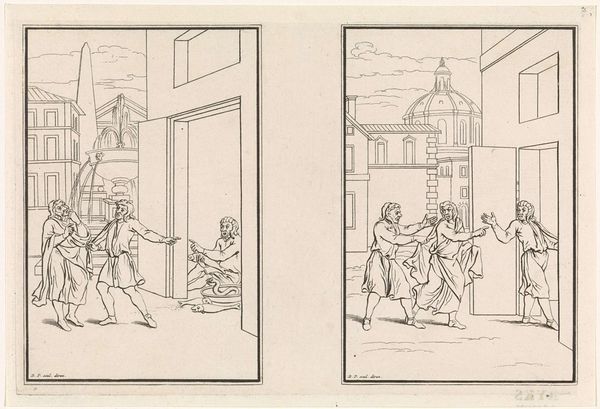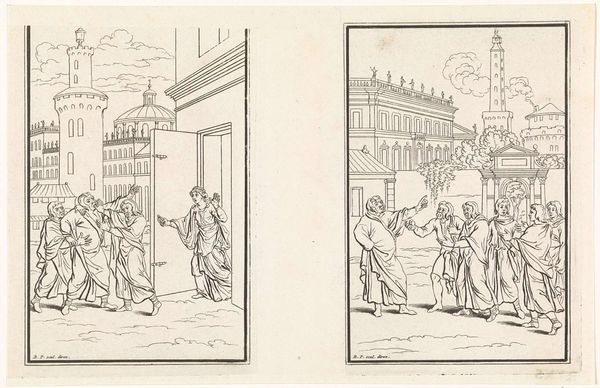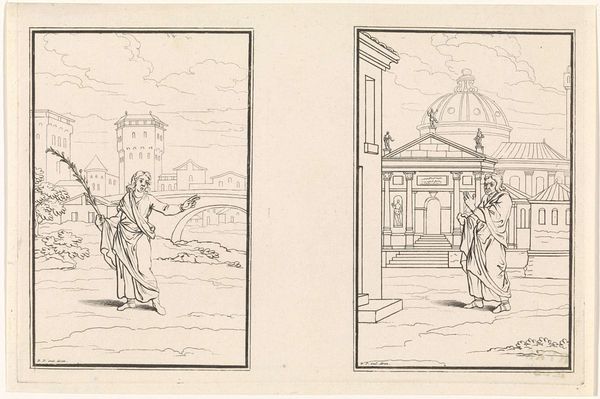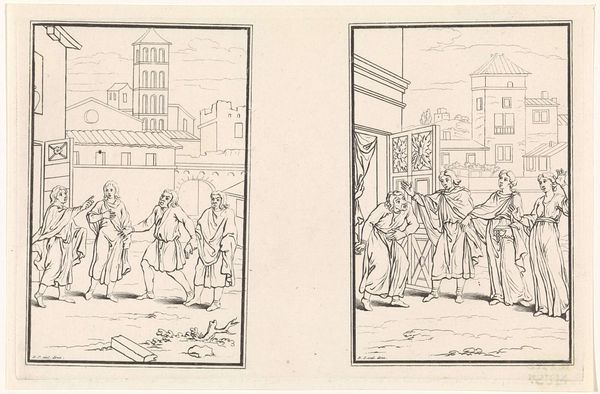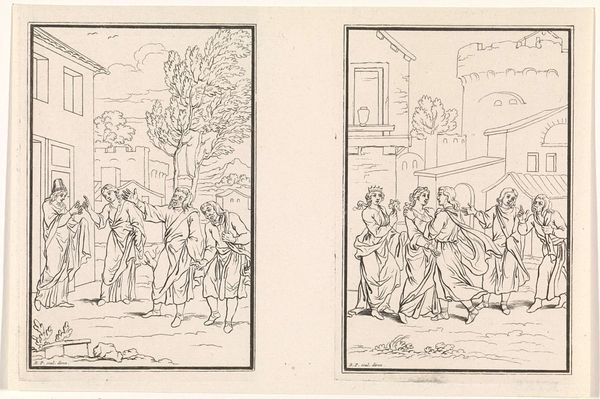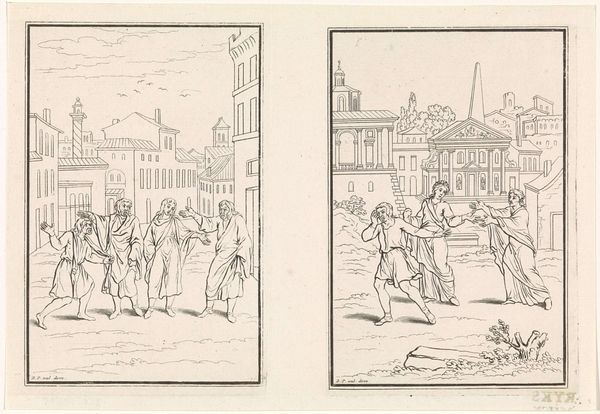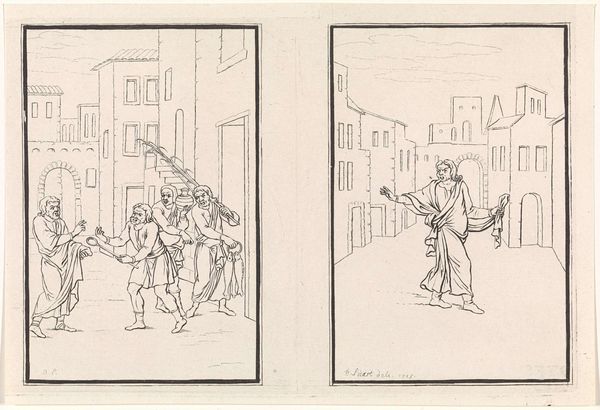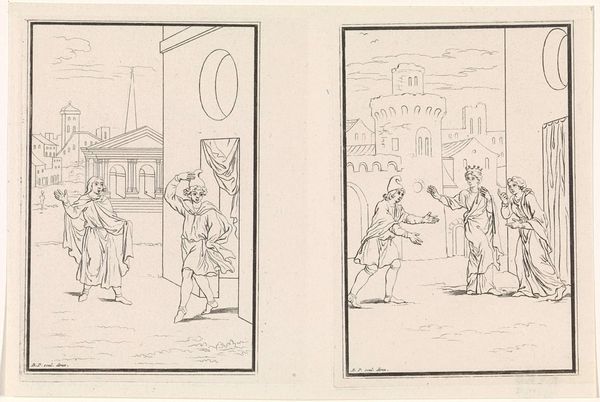
drawing, ink, pen
#
drawing
#
baroque
#
pen illustration
#
pen sketch
#
figuration
#
ink line art
#
ink
#
line
#
pen
#
genre-painting
Dimensions: height 132 mm, width 196 mm
Copyright: Rijks Museum: Open Domain
Editor: Here we have "Twee scènes uit een komedie van Terentius," or "Two Scenes from a Comedy by Terrence," a pen and ink drawing created in 1716 by Bernard Picart. The figures in togas make me think of theatrical gestures, maybe even conflict. What's your take on this work? Curator: The neoclassical setting immediately frames our reading, doesn't it? It’s not merely about the classical subject; it's about the 18th century's *interpretation* of it. What do you notice about the figures’ postures and interactions within that historical context? Think about power, gender, social roles... Editor: Well, the body language is interesting; they are gesticulating wildly, arguing maybe? One of the female figures appears distressed. Curator: Exactly. And consider, who was Terence? His plays often involved enslaved characters outsmarting their masters. Now look at these figures again, and how Picart chooses to depict these encounters. Does it reinforce existing hierarchies, or challenge them in some way through the composition or the characters’ expressions? Editor: That is very interesting; so, perhaps Picart is not simply illustrating the plays, but also offering some commentary on social inequalities through these characters? Curator: Precisely! It urges us to consider the artist’s own context – the early 18th century – and question how classical narratives were used to reinforce or critique contemporary power dynamics. Also, look closer: is it possible that Picart hints at a feminist critique, even in that period? Editor: This drawing seemed pretty straightforward at first, but thinking about the historical context and potential social commentary definitely opens up new avenues for interpretation. Curator: Indeed. By examining visual cues through a critical lens, we reveal how seemingly simple narratives become complex statements about their own time.
Comments
No comments
Be the first to comment and join the conversation on the ultimate creative platform.
